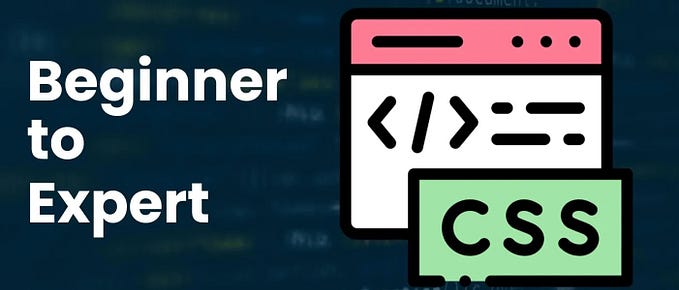The peacock technique: showing your design work to the world

 The door opened and I entered the bedroom of an apartment I was looking to rent. No furniture or items inside, it was almost empty except for a frame in the wall. It was a photo of a peacock. As I stared at it, I could not shake one clear thought off my mind: I need to work on my portfolio.
The door opened and I entered the bedroom of an apartment I was looking to rent. No furniture or items inside, it was almost empty except for a frame in the wall. It was a photo of a peacock. As I stared at it, I could not shake one clear thought off my mind: I need to work on my portfolio.

That term: portfolio, is ominous to every designer, animator, illustrator… It is intimidating (to say the least) to show the work you have done, to put it out there, and to make it share some of the real estate with all those amazing artists posting in Dribbble, Instagram, Medium, you name it. Sometimes I feel as if I am a boy pushing his poorly folded paper boat into a pool crowded with expensive toy boats from reputable brands.

That lack of confidence
It is often that one thinks of his work as “not that great” probably because we have spent so long on that particular piece that by now, the only thing we see are our mistakes. You are not alone, this is a vast topic and you can find many great articles about this fear or anxiety. And it is present in every field, I came across this article that talks about it in the realm of writing: Article.
However, a portfolio is the best way we have to put our foot in the door to get that dream job. So the main goal of your portfolio should be to start a conversation about your work. And there is great advice out there to help us put our best foot forward, I will leave three great articles that talk about this from experience: Fabricio Teixera’s , Daniel’s Fosco’s, Olga Filimon-Lecka’s.
But how to gather courage? How do we avoid that constant voice inside of us that tells us “This is not worthy”? Sometimes our own lack of confidence makes us postpone the making of our portfolio until we get stocked into a permanent loop of rain checks for this task. And since I’m convinced we all are well familiar with this issue, I would like to offer humble advice: try the peacock technique.

What is the peacock technique?
The Conquest of Happiness is a book written by the great Bertrand Russel. The title is self explanatory enough, and in one of the chapters, he talks about peacocks. Russel says (I am paraphrasing) when a peacock shows his plumage to a peahen, he acts grandiose, haughty, even cocky (pun intended). This bird is there, prancing around with pride, showing what he’s got. Two things are important to point out:
First of which, the peacock never doubts his tail is good enough, he shows it as it is, with no doubts. This is me, and I am confident about what I’ve got. This last part is important because I have seen too many students submitting their work for feedback. They sometimes start with disclaimers and they begin defending their work before this works under any kind of examination. Which speaks volumes about lack of confidence. If your work is not at the level you want it to be, well that happens to the vast majority of us, we know we have things to improve. Just keep the mentality that this is your work, you spent time on this, maybe you can improve your colors, composition, layout… your portfolio says: This is where I stand, this is what I’ve got, and I am proud of it. This doubt you feel is normal, I would recommend reading about the Impostor syndrome, and you can try these 20 things to boost your creative confidence.
You should always be open for feedback though, but more on that some other time.

The second part of the peacock strategy is -and this is important- the peacock never stops to look at another colleague’s tail. And that is the paramount part of it.
I do not believe that any peacock envies another peacock his tail, because every peacock is persuaded that his own tail is the finest in the world. The consequence of this is that peacocks are peaceable birds. Imagine how unhappy the life of a peacock would be if he had been taught that it is wicked to have a good opinion of oneself. Whenever he saw another peacock spreading out his tail, he would say to himself:
‘I must not imagine that my tail is better than that, for that would be conceited, but oh, how I wish it were! That odious bird is so convinced of his own magnificence! Shall I pull out some of his feathers? And perhaps I need no longer fear comparison with him.’
For the entire text you can go to archive.org
Now, it is important to state that Bertrand Russel does mention the behavior of the peacocks in his book but he does not call it the Peacock Technique, that is something I use since it is easier to refer to it. Also it is important to address he comments on confidence, and mentions the self-doubt and envy. I, however, advocate for a happy medium between been confident and content of one’s abilities and been able to take feedback.
Anyway, that part of not looking at your fellow designers’ work… easier said than done would be a towering understatement, especially considering that designers spend numerous hours looking for references (which means, staring at excellent work from other designers.) But we have to keep in mind, our work is valuable, we are where we are, and we should not force anything. We cannot let impatience win. More often than not I find myself browsing for references and I think to myself: “Wow, I am kilometers (or miles if you are American) away from this, I must dramatically improve now, no, not now, I need that done yesterday!” so I get impatient and then anxiety sinks in.

So this text is a stream of consciousness about a topic that affects all of us. In no way I consider myself an authority on design, but I feel it is important to talk about things we share. And the insecurity of showing your portfolio to the world is all too common. I try to repeat to myself that a portfolio is always a work in progress, that I will reach a higher level of skill with hard work and open ears.
It is important to keep reading and sharpening your skills, to keep yourself informed about the things you want to accomplish and (Why not?) the things that make you happy. And with that attitude be in terms with posting your portfolio. Also, you can refer to any of the links I wrote to search for advice from more experienced people. I also found this article quite interesting, it is called 10 soft skills for UI UX designers.
Coming back to my room, where the picture of the peacock was hanging, well, I left it right there. My desk is pointing to that same wall, and it is great to remind myself to take pride in my plumage.








